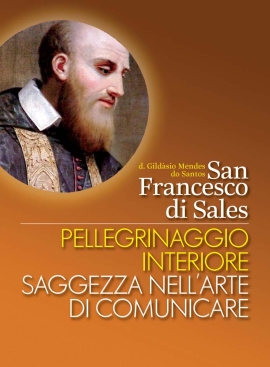The language of art, a new way of communicating
Francis had received a profoundly humanistic education and lived in an academic environment that bore all the vitality and cultural fruitfulness of the Renaissance. Francis studied Latin and Greek. Through his knowledge of literature he developed and created his own language, a simple, practical and affectionate style of writing. In the Renaissance, art had a great impulse and influence on the fabric of culture. Inspired by the art of antiquity, the Renaissance is a fertile field for the growth of new ideas and projects.
Through his abilities and personal interest Francis de Sales was able to appreciate literature, poetry, painting and music, thus expressing his great artistic sensitivity and integrating beauty, discipline and the meaning of art within his cultural and spiritual formation.
Francis lived this artistic experience within his spirituality. He shows in some passages of his writings how he was drawn towards painting, literature, music and poetry. This is not simply an academic or cultural taste. Art touched his way of thinking, feeling, praying and writing.
Morand Wirth has the following to say:
The images taken from artists served him first and foremost to illustrate his aims; however, one senses in Francis de Sales a real appreciation for the beauty of the work of art as such and at the same time the ability to communicate his emotions to his readers. He would say, for example, that “the symmetry of a splendid painting cannot bear the addition of new colours” (C 152) and that “in canvases and frescoes representing a large number of characters in a small space, there is always something left to see and notice, shadows, profiles, bends, twists” (S II 33). Moreover, is painting not perhaps a divine art? The Word of God is not only on the plane of hearing, but also on that of seeing and aesthetic contemplation: God is the painter, our faith is painting, the colours are the Word of God, the brush is the Church (C 145).
Francis de Sales also loved singing and music and emphasised the importance of beautiful music in the liturgy to encourage personal and liturgical prayer. Wirth notes:
It is known that he had hymns sung during catechism classes, but we would like to know what was sung in his cathedral. He wrote in a letter after a ceremony in which a text from the Song of Songs was sung: “Ah, how well all this was sung yesterday in our church and in my heart!” (L IV 269).
As a writer, an artist of the word, St Francis experienced artistic beauty through letters, liturgy, music and poetry. Francis also wrote some religious poems. In 1598 he wrote a poem on the Transfiguration (with a literal, not poetic translation for each stanza).
We have seen, Lord, this face so clear
Infinitely clearer than the shining sun
When in broad daylight it shines brightest
And the universe looks on like a shining eye.
But if such is the body, how much more brilliant
The glory of thy heart, wonderful heart
With a happiness filled, great and abundant
Which from its first birth made it glorious.
Heart so full of splendour that it spreads out
Above its own clothes it makes to shine so as to see
So radiant and white, that snow so shining that
Heaven cannot show to our eyes.
Oh! who then will doubt that he still radiates
Over his servant clothed in humility
Who amid worldly travails honours him always
Remains united to him as his garment?
Come now, ye who admire with what immense glory
Shrouded is the head of your God, and of happiness so great
Know that the dear price of so much glory
Can be paid by humility alone (O I 106-107).
Applying his perspective on art to spirituality, St Francis opens up a pathway in which, through the construction that writing is, in the choice of words with their meanings, colours and sounds, relating words to their symbols, the linguistic skills that link emotions to words are developed.
Francis de Sales was also a great story-teller! As we know, narrative is a way of communicating characterised by talking about things and experiences through letters, stories, literature, tales, using images, metaphors, mythical, religious and cultural elements to communicate a message.
Storytelling prefers simple, human language, deeply touches the imaginative, cognitive and emotional aspects, encouraging the reader’s or listener’s involvement in the plot and the story being told.
Unlike a conceptual text, which depends on formulations with logical premises and conclusions, narrative follows a more informal, figurative and symbolic language, allowing the person to become involved and be part of what is communicated, starting from his or her own experience and upbringing.
St Francis, in his spiritual accompaniment, certainly knew how to use the art of listening – listening to the individual’s own story and their experience of God.


